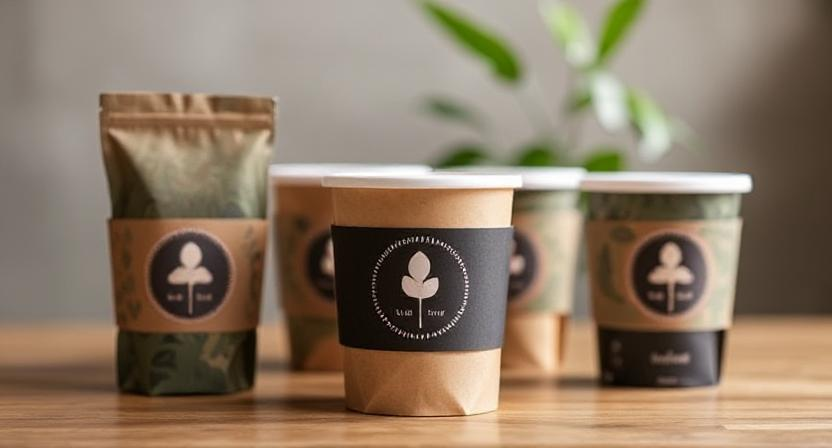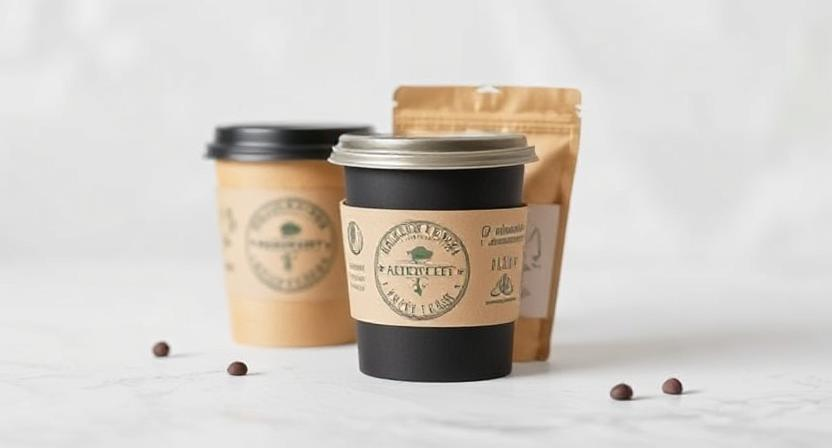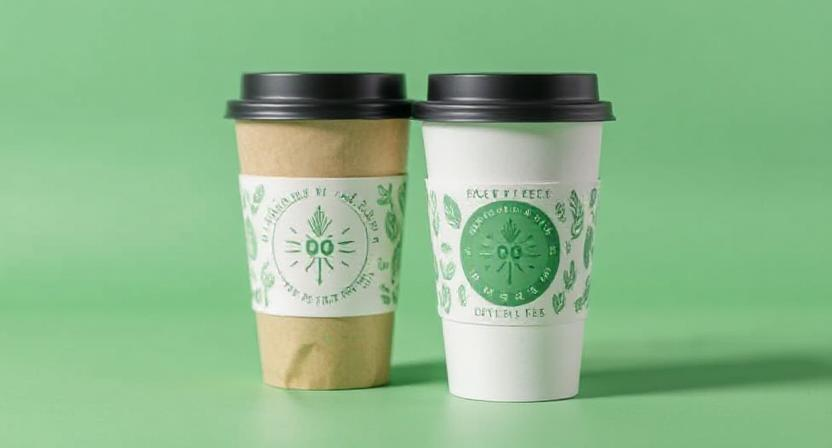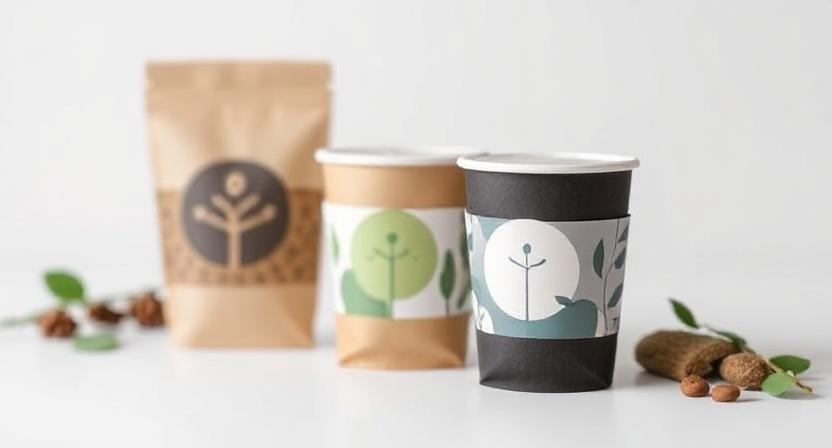
In recent years, sustainability has emerged as a crucial aspect of modern business practices, with brands and consumers increasingly prioritizing eco-conscious choices. One industry that has embraced this shift is coffee. With the rising demand for more environmentally friendly practices, the future of coffee packaging is evolving to meet consumer needs, focusing on sustainable materials, innovative designs, and stylish aesthetics.
As awareness about the environmental impact of single-use plastics and non-recyclable materials grows, coffee companies are turning to eco-friendly solutions to reduce waste and minimize their carbon footprint. From biodegradable coffee sleeves to recyclable coffee bags, these sustainable packaging options are helping brands stay ahead of the curve while appealing to eco-conscious customers.
In this blog post, we will explore the future of coffee packaging, emphasizing how sustainability and style are merging to create innovative solutions that benefit both the environment and the coffee industry.

The Importance of Sustainable Coffee Packaging
Coffee packaging plays a significant role in preserving the freshness and quality of coffee beans, but it also has a considerable impact on the environment. Traditional coffee packaging, especially single-use plastic or non-recyclable materials, contributes heavily to landfill waste and pollution. In fact, plastic coffee pods alone are responsible for tons of waste each year.
However, the growing demand for eco-friendly products has led to the development of sustainable packaging alternatives. Sustainable packaging solutions aim to reduce environmental harm while maintaining the effectiveness and aesthetic appeal of the packaging. This shift is not just a trend but a response to the increasing pressure on brands to minimize their environmental impact.

Types of Sustainable Coffee Packaging
There are several innovative types of sustainable coffee packaging solutions available today. These alternatives are designed to minimize waste, reduce carbon emissions, and maintain the integrity of the coffee inside.
1. Compostable Coffee Bags
Compostable coffee bags are made from biodegradable materials such as paper, plant-based plastics, or other natural fibers. These bags can break down naturally in composting conditions, reducing waste and leaving behind minimal environmental impact.
2. Recyclable Coffee Sleeves
Recyclable coffee sleeves are gaining popularity as they provide a simple, eco-friendly solution for protecting hands from hot cups of coffee. Made from recyclable paperboard or cardboard, these sleeves can be disposed of in recycling bins, reducing landfill waste.
3. Biodegradable Pods
Biodegradable coffee pods are designed to replace traditional plastic or aluminum pods. Made from plant-based materials, these pods break down naturally over time, offering an eco-friendly alternative to conventional coffee pods.
4. Glass and Reusable Containers
Glass jars and reusable coffee containers are becoming more common as consumers seek ways to reduce their reliance on disposable packaging. These containers not only maintain the freshness of the coffee but also encourage customers to reuse them, reducing the need for single-use packaging altogether.
5. Plant-Based Materials
Brands are also experimenting with plant-based packaging, such as coffee bags made from corn starch or sugarcane. These materials are biodegradable and often compostable, providing a sustainable alternative to traditional coffee bags.

The Benefits of Sustainable Coffee Packaging
There are several compelling reasons why sustainable coffee packaging is essential for the future of the coffee industry. Below are some of the key benefits:
Reducing Environmental Impact
The most significant benefit of sustainable packaging is its ability to reduce the environmental impact of coffee packaging. By using biodegradable and recyclable materials, coffee companies can reduce waste, pollution, and carbon emissions associated with traditional packaging.
Supporting a Circular Economy
Sustainable packaging supports the concept of a circular economy, where products are designed to be reused, recycled, or composted. This reduces the need for raw materials and minimizes waste, making the entire supply chain more efficient and environmentally friendly.
Enhancing Brand Image
In today’s eco-conscious world, consumers are more likely to support brands that prioritize sustainability. By using eco-friendly coffee packaging, businesses can enhance their brand image and appeal to a growing demographic of environmentally conscious consumers.
Cost Savings in the Long Run
Though sustainable packaging may have higher upfront costs, it can lead to cost savings in the long term. Brands can reduce waste disposal costs, minimize the use of plastic, and create loyal customers who appreciate the brand’s commitment to sustainability.

The Role of Stylish Design in Coffee Packaging
While sustainability is the primary concern for many consumers, stylish and attractive packaging remains a key factor in capturing attention on store shelves or in online marketplaces. The future of coffee packaging is not just about being eco-friendly but also about making a statement with innovative and visually appealing designs.
Minimalistic Designs
Minimalist designs focus on simplicity and elegance, often featuring natural colors and earthy tones that evoke a sense of eco-consciousness. This style works well with sustainable materials and aligns with the growing trend of ‘less is more.’
Vintage-Inspired Labels
Vintage-inspired designs are making a comeback in coffee packaging, offering a nostalgic and artisanal feel. These designs often feature handwritten fonts, classic illustrations, and a sense of craftsmanship that appeals to consumers looking for a more personal connection with their coffee brand.
Bold and Modern Designs
On the other end of the spectrum, many coffee brands are embracing bold, modern designs with striking graphics, vibrant colors, and innovative shapes. These designs aim to make a statement and attract consumers who want something fresh and unique.
Customizable Packaging
Customizable packaging allows brands to tailor the design to their target audience. Whether it’s personalized labels or unique packaging shapes, customizable options give businesses the flexibility to create standout packaging that reflects their values and connects with their customers.

The Future of Coffee Packaging: Trends to Watch
As sustainability and style continue to dominate the coffee industry, several key trends are shaping the future of coffee packaging.
1. Eco-Friendly Materials
In the coming years, we can expect to see even more coffee packaging made from sustainable, plant-based materials such as hemp, bamboo, and algae. These materials are biodegradable, compostable, and renewable, offering a more sustainable alternative to traditional packaging.
2. Smart Packaging Solutions
Smart packaging, which incorporates technology such as QR codes and NFC (Near Field Communication) tags, is gaining popularity in various industries, including coffee. These technologies can be used to provide customers with information about the product’s origin, sustainability practices, and brewing instructions.
3. Packaging that Tells a Story
Consumers are increasingly interested in the stories behind the products they buy. Coffee packaging that tells the story of the beans’ origin, the farmers who grew them, and the sustainability practices used during production is likely to become more prevalent. This transparency builds trust and loyalty among customers.
4. Zero-Waste Packaging
Brands are focusing on developing packaging that is entirely zero-waste, meaning it can be reused, recycled, or composted, leaving no harmful residues. This is part of the broader movement towards a zero-waste lifestyle, and coffee brands are leading the charge in adopting these practices.

Conclusion: A Greener and More Stylish Future for Coffee Packaging
The future of coffee packaging is bright, sustainable, and stylish. As more brands embrace eco-friendly alternatives and innovative designs, the coffee industry is becoming a leader in sustainability. From biodegradable coffee bags to recyclable coffee sleeves, sustainable packaging solutions are not only helping protect the environment but also allowing brands to connect with eco-conscious consumers.
By prioritizing both sustainability and style, coffee brands can build stronger relationships with their customers while contributing to a greener, more responsible world. As consumers continue to demand environmentally friendly options, the coffee packaging industry will evolve to meet these needs, creating a future where sustainability and style go hand in hand.
